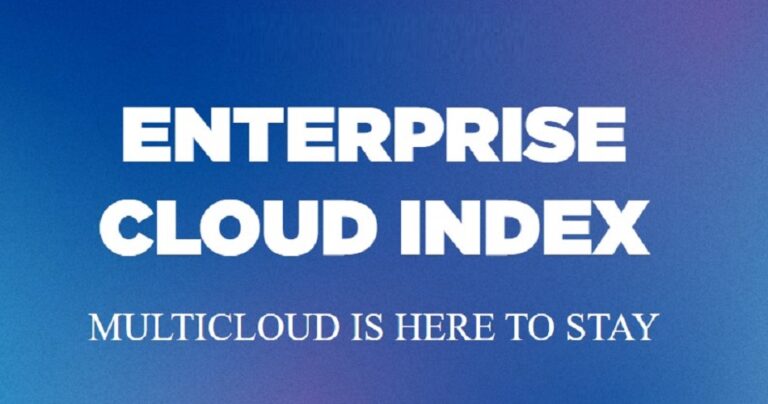Diversity is good. In almost every walk of life or aspect of humanity, diversity is widely agreed to a positive force for good, especially these days.
But diversity inside any given information technology stack may not always be universally positive i.e. for every new system, function, tool, service or subroutine, there is always an integration payoff and a whole raft of other management burdens to shoulder.
Styling itself directly as a hybrid multi-cloud (perhaps even poly-cloud, a deployment scenario where individual large application workloads are separated out over different instances) company on a mission to manage, Nutanix has now tabled its fifth global Enterprise Cloud Index (ECI) research report.
These types of reports are of course rarely (if ever) carried out with a carefully crafted message set in the background and an analysis ‘bent’ designed to deliver to the company’s mission statement, so is this all spin or is there substance within?
Also read: “Nutanix will make the cloud invisible”
Spin or substance?
The company says that this year’s study shows that IT infrastructure is increasingly diverse with organisations challenged with integrating data management and control. Nutanix says it has found that the majority of IT teams leverage more than one IT infrastructure, a trend that’s expected to intensify in the future.
But, says the company that sells cloud visibility and infrastructure management technologies, many organisations struggle with visibility of data across environments with only 40% reporting complete visibility into where their data resides. Sarcasm aside (Nutanix clearly looked for visibility issues because it does actually want to fix this element of cloud disconnect), this is a serious issue with the whole debate around cloud insight now spanning not just visibility, but also observability in the wider realm of Application Performance Management (APM) and other associated disciplines.
“In the coming years, there will be hundreds of millions of applications created, which will generate unprecedented amounts of data,” said Lee Caswell, SVP of product and solutions marketing at Nutanix. “Organisations are grappling with current application and data management across the edge, different clouds and in the core.”
Caswell says that his team are listening to software application development professionals working in cloud-native environments and the feedback is that there’s a need in the market for a cloud operating model to help build, operate, use and govern a hybrid multi-cloud to support all types of applications.
Drastic shift to multiplicity
In the past five years of conducting the ECI, respondents’ attitudes have drastically shifted toward the use of multiple IT environments. In 2018, well over half of respondents said they envisioned running all workloads exclusively in either a private cloud or the public cloud one day.
Rather than working to consolidate on a particular infrastructure or IT operating model, as seemed desirable in 2018, most enterprises now see the inevitability (and even benefits) of running workloads across public cloud, on-premises and at the edge.
“The goal for organisations now is to make this hybrid operating model more efficient, especially when managing IT environments across the edge to the core. The growing level of diversity in cloud deployments creates enormous complexity in managing application’s data across cloud environments,” notes Caswell and team, in a technical statement.
Nutanix (perhaps inevitably) highlights the need for tools that allow organisations to provision, move, manage, monitor and secure applications and data from a single console in a uniform manner – kind of what Nutanix does then, right?
Single unified control plane
Nearly all respondents say they’d benefit from having a single unified control plane to manage applications and data across diverse environments. Most organisations use more than one type of IT infrastructure and nearly all agree that having a single platform to manage them all consistently would be ideal.
According to Nutanix, “Data is driving infrastructure decisions for enterprises, with data security, protection and recovery and sovereignty topping the list of key drivers. However, visibility is a growing challenge. While 94% of respondents agree that having full visibility is important, only 40% of ECI respondents report having complete visibility into where their data resides.”
Nearly all respondents (96%) have begun using open source Kubernetes orchestration. But they cite designing and configuring the underlying infrastructure, storage and database services as among the top challenges they continue to face with their Kubernetes deployments.
Ain’t no cream doughnuts
Okay so yes, it’s an ‘independent’ analysis (carried out by Vanson Bourne) but clearly, Nutanix wasn’t going to study the need for cream cakes and doughnuts. That being said, it’s often worth reading these reports to gain a general trend on market movements and here can see huge concern over infrastructure which logically spans into Infrastructure-as-Code and cloud developer architectures that advocate kernel-level configuration controls – and that’s something we didn’t talk about a decade ago i.e. we assumed public cloud meant it was all taken care of by the hyperscaler Cloud Service Providers (CSPs) and anyone who has attended an AWS re:Invent conference will know that CEO Adam Selipsky has been vocally honest about how cloud complexity has been historically badly managed and now set to establish for far more automation for control.
We could go on, but the point is arguably still well made, Nutanix is highlighting the diversity visibility complexity challenge and it wants to help.
Tip: What is Nutanix and how it conquers the hybrid and multi-cloud world
